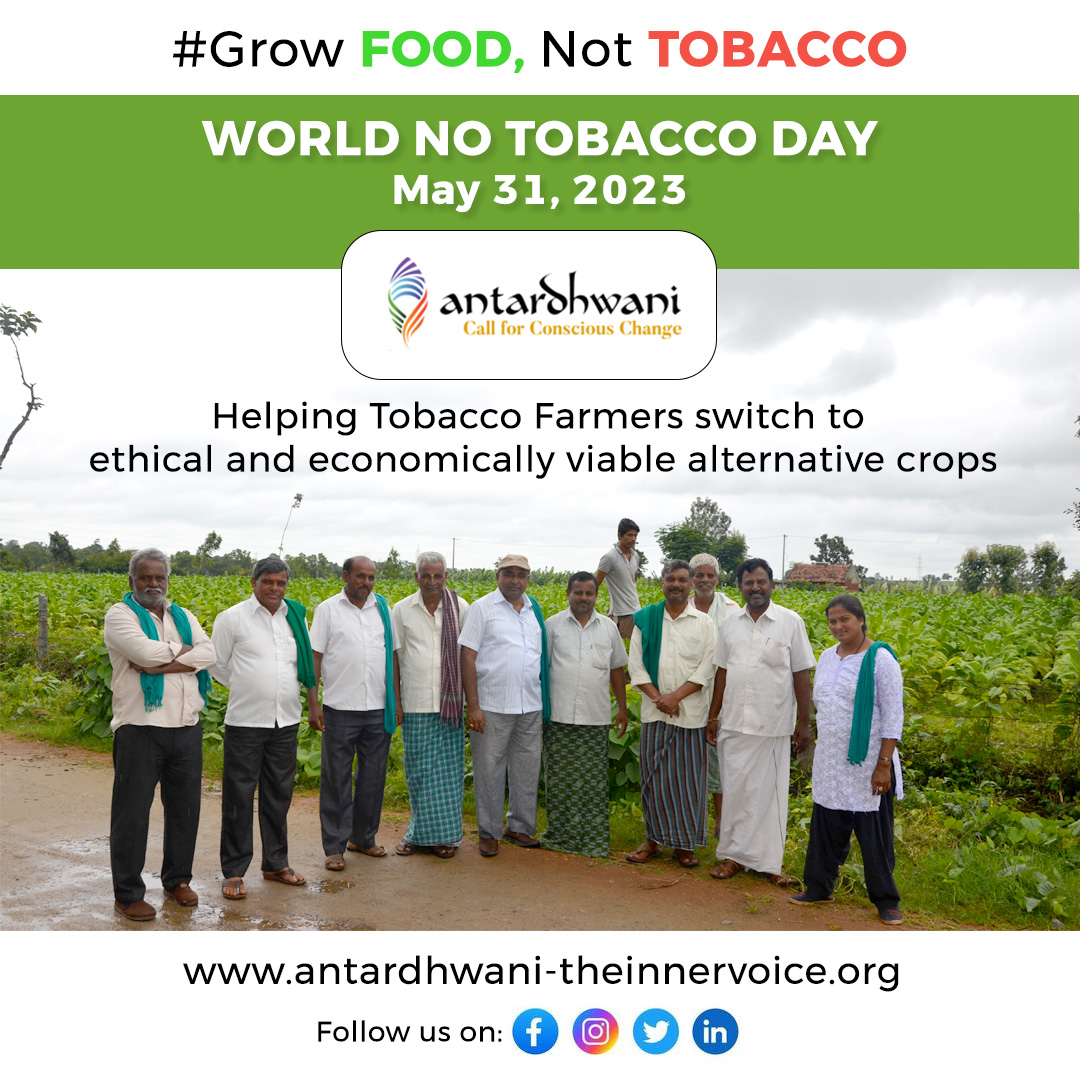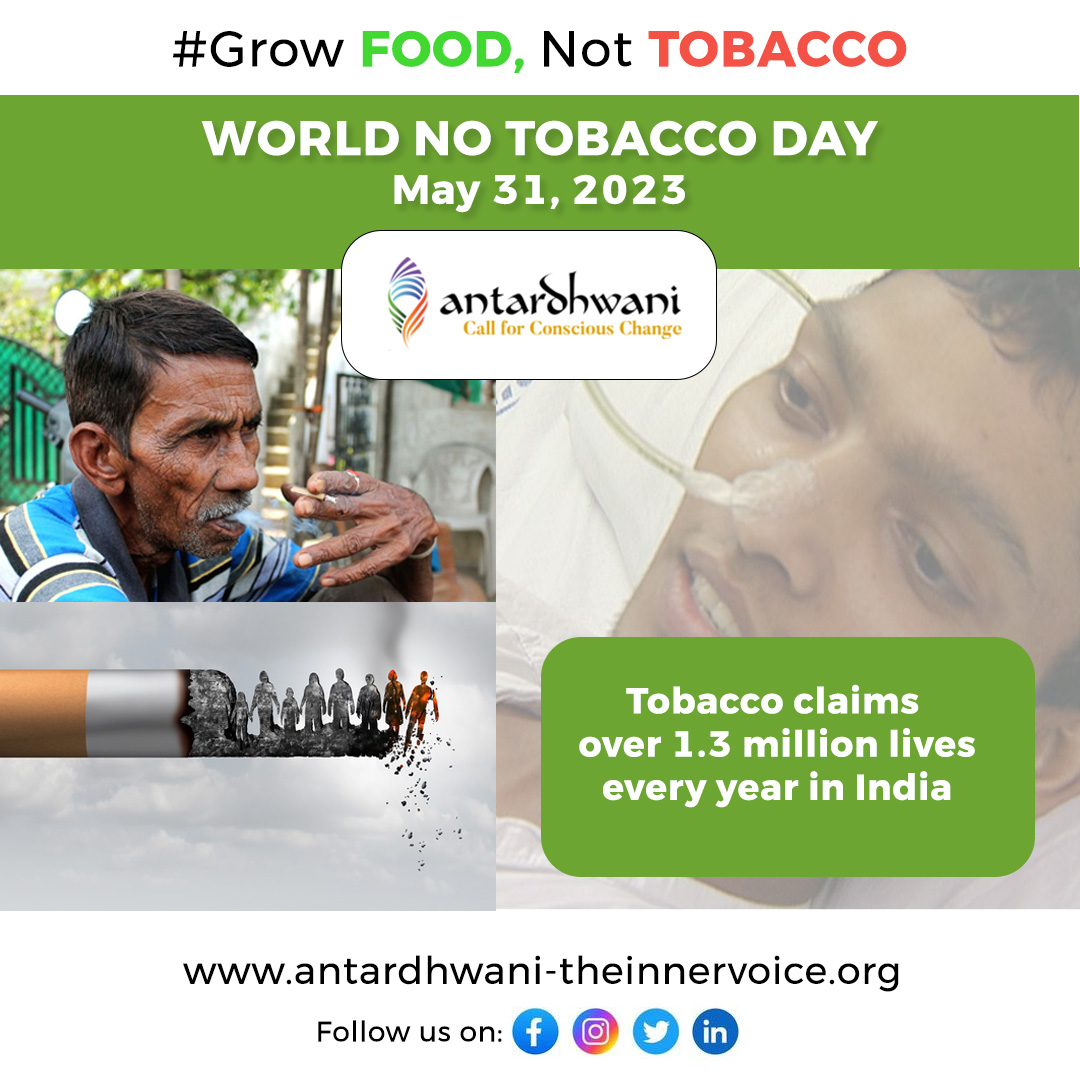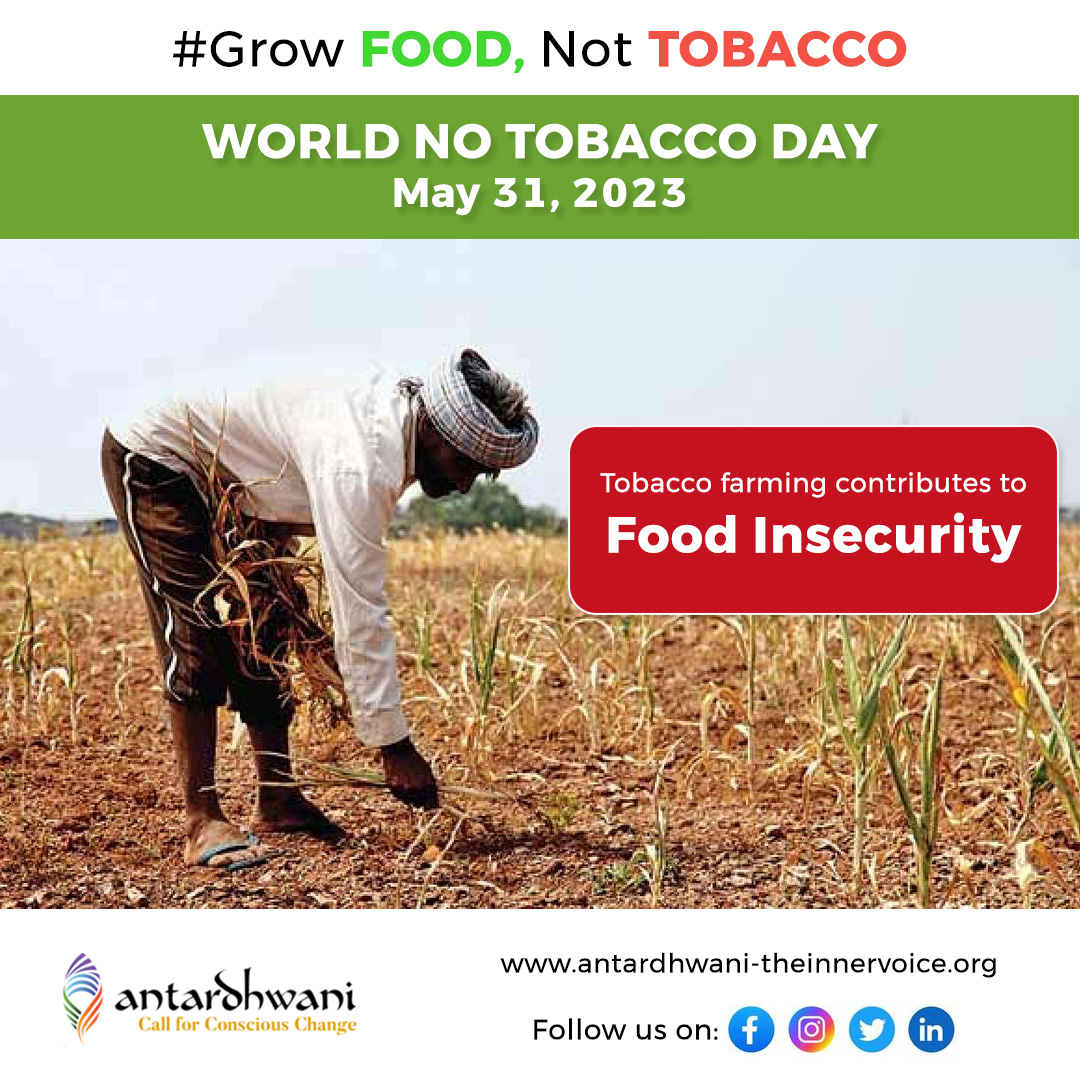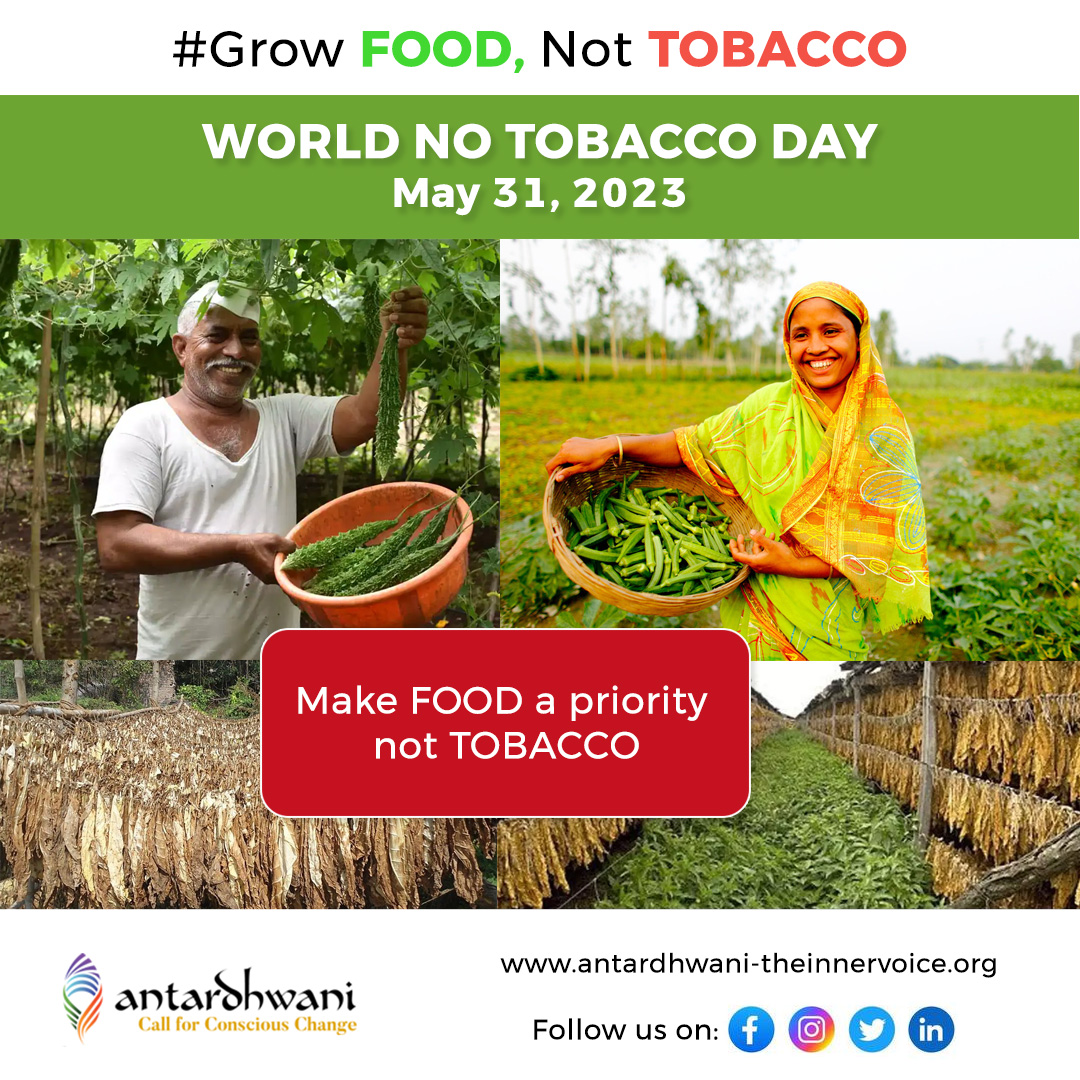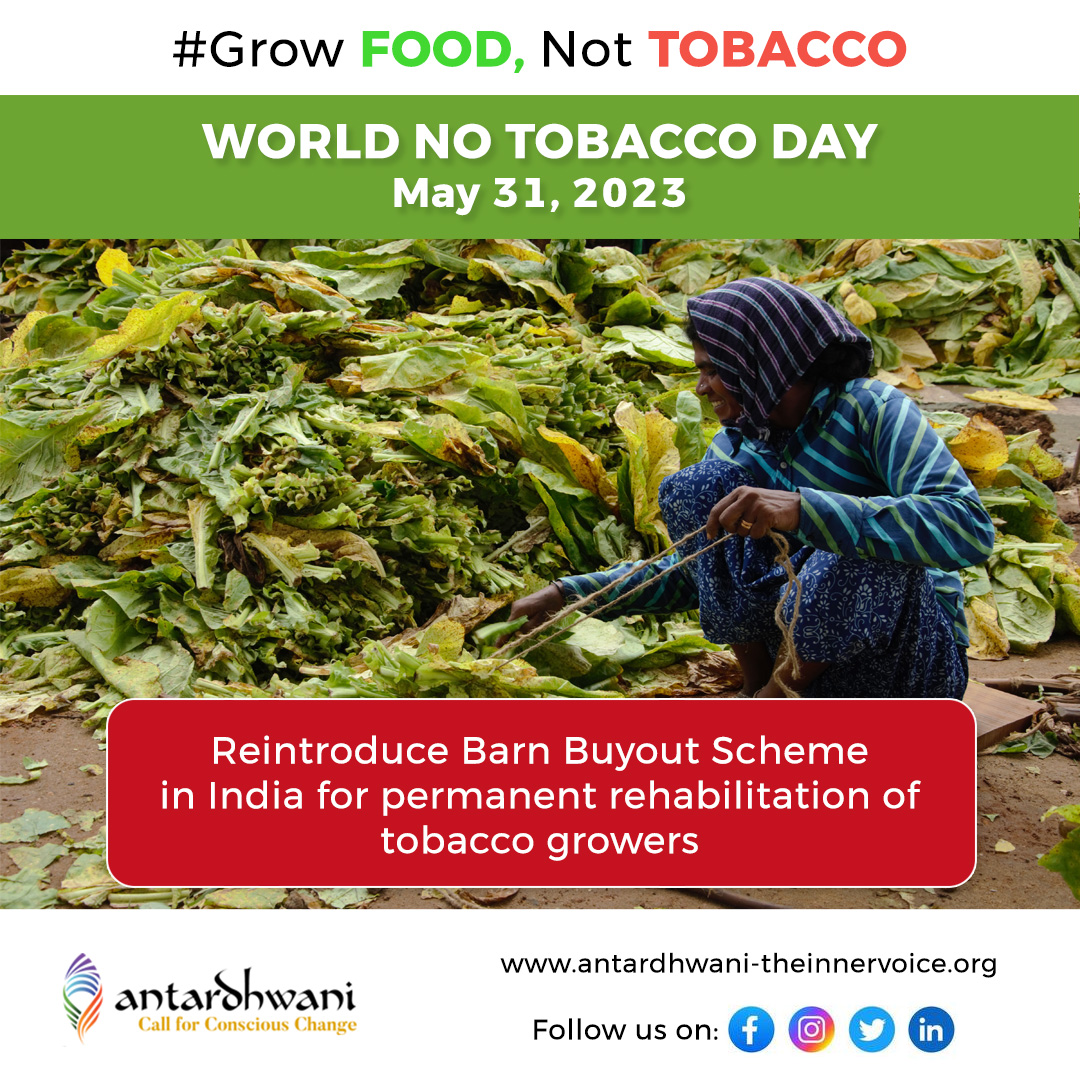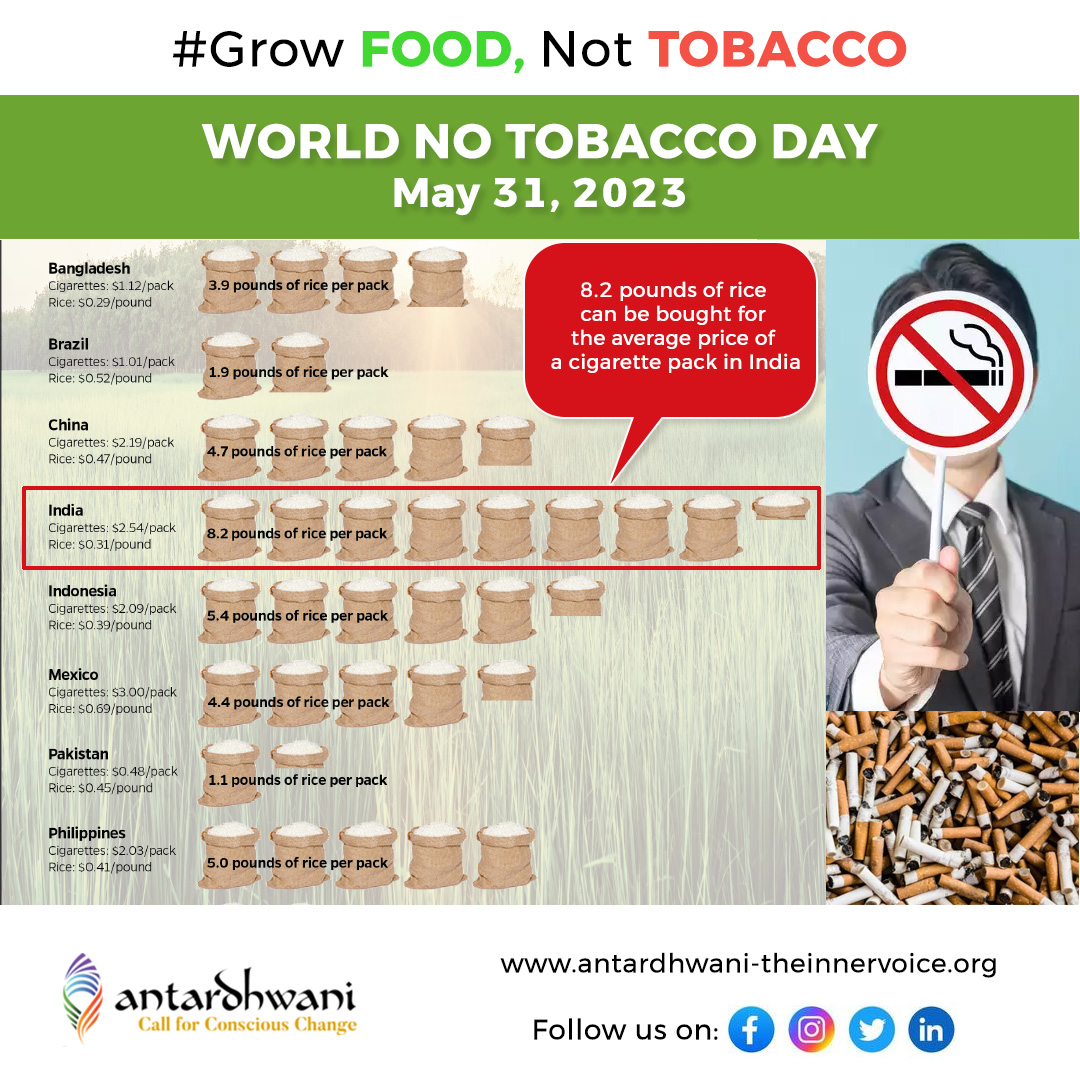World No Tobacco Day, 31st May
Grow Food Not Tobacco
_v1.jpg)
Grow Food Not Tobacco
_v1.jpg)
Along National Highway 275 beyond Mysuru in India’s southern state of Karnataka are contiguous farms of tobacco spread over thousands of hectares. The delicate green tobacco leaves covering the vast expanse of farmlands may put you in awe, cleverly disguising their lethal impact on the planet.
Tobacco claims over 1.3 million lives every year in India, the second largest tobacco consumer and producer in the world, only next to China. 1 2 With nearly 275 million consumers of all ages (15 years and above) and 800 million kgs produced every year, tobacco is a potent health and environmental threat in India.
Tobacco-related cancers accounted for 27% of India’s cancer burden in 2020 and its consumption also causes more than 4.5 lakh (0.45 million) deaths from various cardiovascular conditions every year. Even those who don’t use tobacco are exposed to second hand smoke at public places, workplaces and home. The estimated economic burden of tobacco stood at about 1% of the country’s GDP in 2017-18 3
1 Global_Adult_Tobacco_Survey2_India_2016-17_June2018.pdf
Apart from being a serious health threat to its consumers, tobacco poses significant risks to farmers and their families. Tobacco farmers and those who sort the leaves, most of whom are women, contract green tobacco sickness, a disease caused by nicotine absorption through the skin. They are also perennially exposed to tobacco dust leading to several breathing-related conditions. Children and pregnant women in their homes are particularly vulnerable to tobacco farming.
In the times of accelerated climate change, the cultivation of tobacco has massive environmental impact too. Tobacco curing is among the major reasons of large-scale deforestation besides water & soil depletion. Wood is used to cure or dry tobacco leaves once harvested. A full-grown tree is needed to make nearly 300 cigarettes and about 8kg of firewood is used to cure just 1kg of tobacco leaves. Around 200,000 hectares of land across the world are cleared for tobacco cultivation and curing each year.
Tobacco cultivation also seriously depletes water level as it needs about eight times more water than many other crops. At the same time, it also leaves the soil highly degraded owing to intensive use of pesticides and fertilizers, eventually polluting critical water resources like lakes and rivers where they seep into. The crop cultivation as well as manufacturing of various products also generates considerable amounts of carbon emissions.
3 India loses 1% of its GDP to diseases and early deaths from tobacco use, finds WHO study
Besides all that tobacco does to people and the planet, it’s also not lucrative for farmers who often earn less than their counterparts growing other cash crops. They are often bound by contracts with the tobacco companies and remain under perpetual debts. The assured purchase of yield by tobacco companies is their only consolation.
Among the most potent but little explored means to prevent consumption of tobacco is to reduce tobacco growing by helping farmers switch to ethical and economically viable alternative crops. It’s definitely not facile but can be achieved if the farmers are aided with expert guidance in feasible crop selection, easy access to inputs and robust marketing chain.
Karnataka is the country’s second largest producer of tobacco after neighbouring state Andhra Pradesh, with an estimated 90,000 farmers growing the crop on more than 85,000 hectares across the two districts of Mysuru and Hassan. 4
The Think Tank started an alternative tobacco farming initiative in Hunsur on a trial basis in 2019 after intensive consultations with a group of tobacco farmer leaders from the region, tobacco control experts from the World Health Organization, oncologists, legal practitioners into tobacco prevention and healthcare journalists.
4 Tobacco farmers in Karnataka seek reduction in penalty for excess cultivation - The Hindu
It identified 50 tobacco farmers from Hunsur for the trial and initially started with creating awareness among them about the adverse health and environmental impacts of growing tobacco. Also, the impact on them and their families.
The farmers were then consulted on feasible alternative crops which could assure them high stable returns too. With their visible inclination towards growing sandalwood, one of the most valuable timbers in the world, besides some seasonal fruits, they were then taken on a tour to the farm of an award-winning sandalwood and fruit grower Kavitha Mishra in northern Karnataka city of Raichur. A successful cultivator who turned a barren land into a blooming orchard of sandalwood trees and a host of fruits, Kavitha had given up a job offer from one of India’s leading information technology companies to pursue agriculture.
Once the farmers were convinced about the possibility of growing sandalwood in the weather conditions prevailing in Hunsur and the crop’s incredibly high returns, they principally agreed on each giving up growing tobacco on one acre area of their farmlands. While a kilogram of flue cured Virginia tobacco fetches between Rs 150-Rs 200, the same weight of sandalwood fetches anywhere between Rs 20,000 to Rs 30,000 depending on the quality.
With Kavita visiting the farmers in Hunsur soon after and assuring the soil quality and prevailing climatic conditions there were good to grow sandalwood, it was time for the next steps.
With an area of 50 acres now free from tobacco, the Think Tank procured and provided the farmers 15,000 high grade saplings of sandalwood and over 8,000 saplings of lucrative seasonal fruits including guava, black plum and sapota at no cost.
The farmers are hand held by a group of agronomists, ecologists, doctors and other experts who help them navigate the next steps.
The sandalwood saplings have since grown tall and the farmers have already harvested the fruit trees once. Inspired by their success, more farmers in the region are now beginning to think of moving away from tobacco.
Ravindra Gowda, one of the farmers who is now growing sandalwood and fruits in a part of his farmland, wants to gradually give up growing tobacco altogether. “The sandalwood plants have grown tall. It will take a few more years for it to fully grow. In the meantime, we will keep harvesting the fruits every cycle. We expect good returns,” he says.
Another farmer KB Jayanna from Hunsur tells other farmers how he decided to give up growing tobacco in an acre of his farm despite others hesitating to do so. “I decided to be a part of the initiative despite others warning me of the possible risks. Farmers hesitate to grow sandalwood owing to incidents of theft of the high value tree. I have already harvested the guava plants once,” says Jayanna.
Antardhwani’s chairperson and an acclaimed oncologist who has founded a network of high-end cancer hospitals in India and abroad, Dr BS Ajaikumar says it’s time to eliminate the root cause of cancer – tobacco. “I got into oncology to cure people of cancer and save lives, not for business. And, that’s what we intend to do at any cost. With this initiative, we have at least been able to convince a group of tobacco farmers to embrace viable alternative crops and have shown that it’s possible. We intend to bring hundreds of tobacco farmers of the region under the fold in the next phase,” says Dr Ajaikumar.
The Think Tank has ambitious plans to gradually shift the entire tobacco belt of the region to alternative farming and to make Mysore the first tobacco-free city of India.

